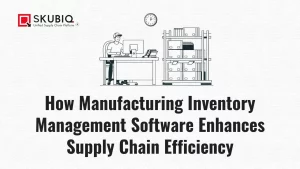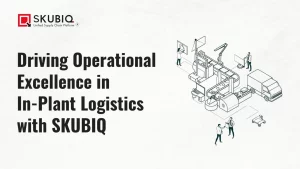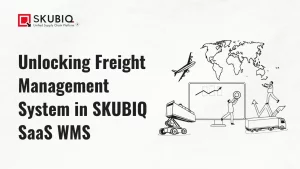Inventory forecasting is a crucial component of supply chain management that allows businesses to predict future inventory needs. By accurately forecasting inventory, companies can optimize stock levels, reduce holding costs, and ensure they meet customer demand without overstocking or understocking. This detailed guide will walk you through the essentials of inventory forecasting, its benefits, methods, and best practices.
The Importance of Inventory Forecasting
Effective inventory forecasting helps businesses maintain the right balance of stock. Accurate forecasting:
- Reduces Costs: Minimizes overstock and associated holding costs.
- Enhances Customer Satisfaction: Ensures product availability, preventing stockouts.
- Optimizes Storage: Efficient use of warehouse space.
- Improves Cash Flow: Frees up capital that would otherwise be tied up in excess inventory.
Types of Inventory Forecasting
There are several types of inventory forecasting methods, each suitable for different business needs. The primary types include:
Qualitative Forecasting
This method relies on expert judgment and market research. It is particularly useful for new products with no historical sales data. Techniques include:
- Market Research: Surveys and interviews with customers and industry experts.
- Delphi Method: Consensus-building among a panel of experts.
Quantitative Forecasting
Quantitative forecasting uses historical data and statistical techniques. It is more accurate for established products. Common methods are:
- Time Series Analysis: Examines patterns and trends in historical data.
- Causal Models: Considers factors that influence demand, such as economic indicators.
Inventory Forecasting Methods
Moving Averages
Moving averages smooth out fluctuations in demand data to identify trends. The two main types are:
- Simple Moving Average (SMA): Average of demand over a set period.
- Weighted Moving Average (WMA): Assigns different weights to data points, giving more importance to recent data.
Exponential Smoothing
This method applies decreasing weights to past data. Exponential smoothing is ideal for data with no clear trend or seasonality. Variations include:
- Single Exponential Smoothing: For data without trend or seasonality.
- Double Exponential Smoothing: For data with a trend.
- Triple Exponential Smoothing: For data with both trend and seasonality.
Seasonal Decomposition
Seasonal decomposition separates demand data into trend, seasonal, and residual components. This method is beneficial for products with seasonal demand patterns.
Regression Analysis
Regression analysis examines the relationship between demand and other variables, such as price, advertising, or economic conditions. It helps identify the factors that influence demand.
Best Practices for Inventory Forecasting
To achieve the best results from inventory forecasting, businesses should follow these best practices:
Use the Right Tools
Invest in advanced forecasting software that can handle large datasets and complex calculations. These tools can provide more accurate and reliable forecasts.
Incorporate Market Trends
Stay updated with market trends and external factors that can impact demand. This includes economic conditions, competitor actions, and technological advancements.
Regularly Review and Adjust Forecasts
Regularly review forecasts and adjust them based on the latest data and market conditions. This ensures that forecasts remain accurate over time.
Collaborate Across Departments
Collaborate with other departments, such as sales, marketing, and finance, to get a comprehensive view of factors influencing demand. This holistic approach leads to more accurate forecasts.
Monitor Performance Metrics
Track key performance metrics such as forecast accuracy, inventory turnover, and service levels. Use these metrics to identify areas for improvement.
Challenges in Inventory Forecasting
Despite its benefits, inventory forecasting comes with challenges:
Data Quality
Accurate forecasting relies on high-quality data. Inaccurate or incomplete data can lead to erroneous forecasts.
Demand Variability
Unexpected changes in demand, due to factors like economic shifts or natural disasters, can disrupt forecasts.
Lead Time Variability
Variations in supplier lead times can impact the availability of inventory, making it harder to predict stock levels accurately.
Technological Solutions for Inventory Forecasting
Advancements in technology have led to the development of sophisticated tools and software that enhance inventory forecasting accuracy. These solutions include:
Artificial Intelligence (AI) and Machine Learning
AI and machine learning algorithms can analyze large datasets, identify patterns, and make accurate predictions. These technologies can also adapt to changing conditions, improving forecast accuracy over time.
Cloud-Based Solutions
Cloud-based forecasting tools offer real-time data access and collaboration. They are scalable and can handle complex forecasting models.
Integrated ERP Systems
Enterprise Resource Planning (ERP) systems integrate various business processes, providing a holistic view of inventory levels, sales, and demand. This integration enhances forecasting accuracy.
Implementing an Inventory Forecasting System
2. On-Premises WMS:
Enterprise Resource Planning (ERP) systems integrate various business processes, providing a holistic view of inventory levels, sales, and demand. This integration enhances forecasting accuracy.
Step 1: Assess Current Inventory Levels
Evaluate your current inventory levels and identify areas where overstock or stockouts occur frequently.
Step 2: Choose the Right Forecasting Method
Select a forecasting method that suits your business needs and the nature of your products.
Step 3: Collect and Analyze Data
Gather historical sales data and other relevant information. Use this data to create baseline forecasts.
Step 4: Implement Forecasting Software
Deploy advanced forecasting software that can automate calculations and provide real-time updates.
Step 5: Train Your Team
Ensure that your team understands how to use the forecasting tools and interpret the results.
Step 6: Monitor and Adjust
Regularly review the performance of your forecasting system and make necessary adjustments to improve accuracy.
Conclusion
Inventory forecasting is a critical aspect of supply chain management that helps businesses maintain optimal stock levels, reduce costs, and improve customer satisfaction. By understanding the different types of forecasting methods, implementing best practices, and leveraging advanced technologies, businesses can enhance their forecasting accuracy and drive better business outcomes.



